ཨོཾ་མ་ཎི་པདྨེ་ཧཱུྃ(Om Ma Ni Pad Me Hum)
Hiking#
Take a step forward, and the sky begins to flow.
To truly understand a place, it is not necessary to visit all of its attractions. Instead, it is about walking freely, whether in bustling cities, empty mountains, narrow alleys, or by the water. Use each step to measure it and each sight to experience it.
Everything you touch is fresh, and everything you smell is a surprise.
By slowly moving forward and contemplating, the surrounding scenery gradually merges with your inner feelings, and true beauty will emerge at a certain moment.
A few days ago, when I went out to relax, I originally walked along the road. However, the constant flow of cars and the buzzing sound of tires rubbing against the ground were really annoying. So, I decided to climb up the slope by the roadside and walk along the winding path on the top of the slope. One small path led to another, and by walking randomly like this, I unexpectedly discovered many unseen views and reached places that seemed far away. Naturally, my camera also captured these moments.
Here, I would like to share some of the sights I saw and some photography exercises.
Pavilion#
The place I visited belongs to a hilly area, with hills stretching from north to south, one after another, continuously. When viewed from the east and west, they appear layered, giving a feeling of "peaks seen from the side and ridges seen from the front."
The highway flows through the layered hills like a river, winding and disappearing into the shadows of the hills. After getting away from the noise of the traffic, I climbed up the slope and caught sight of a pavilion in the distance. I had taken a photo of it in winter, but it was blurry and I couldn't see the continuous mountains behind it. This time, I had a good opportunity.
When I took the photo below, I had already climbed up the slope for a long time and had been staring at the pavilion for a while. I was thinking about the composition: the mountains naturally created depth of field, and the pavilion would be best positioned slightly below the center, leaving empty space for the mountains to form a contrast in size. However, the pavilion seemed a bit small, so I decided to get closer... Just as I hesitated, a truck passed by in the distance, raising a cloud of dust into the air. The scattered dust contrasted with the quiet mountains and the pavilion, creating the perfect moment. That's how I captured the photo below:
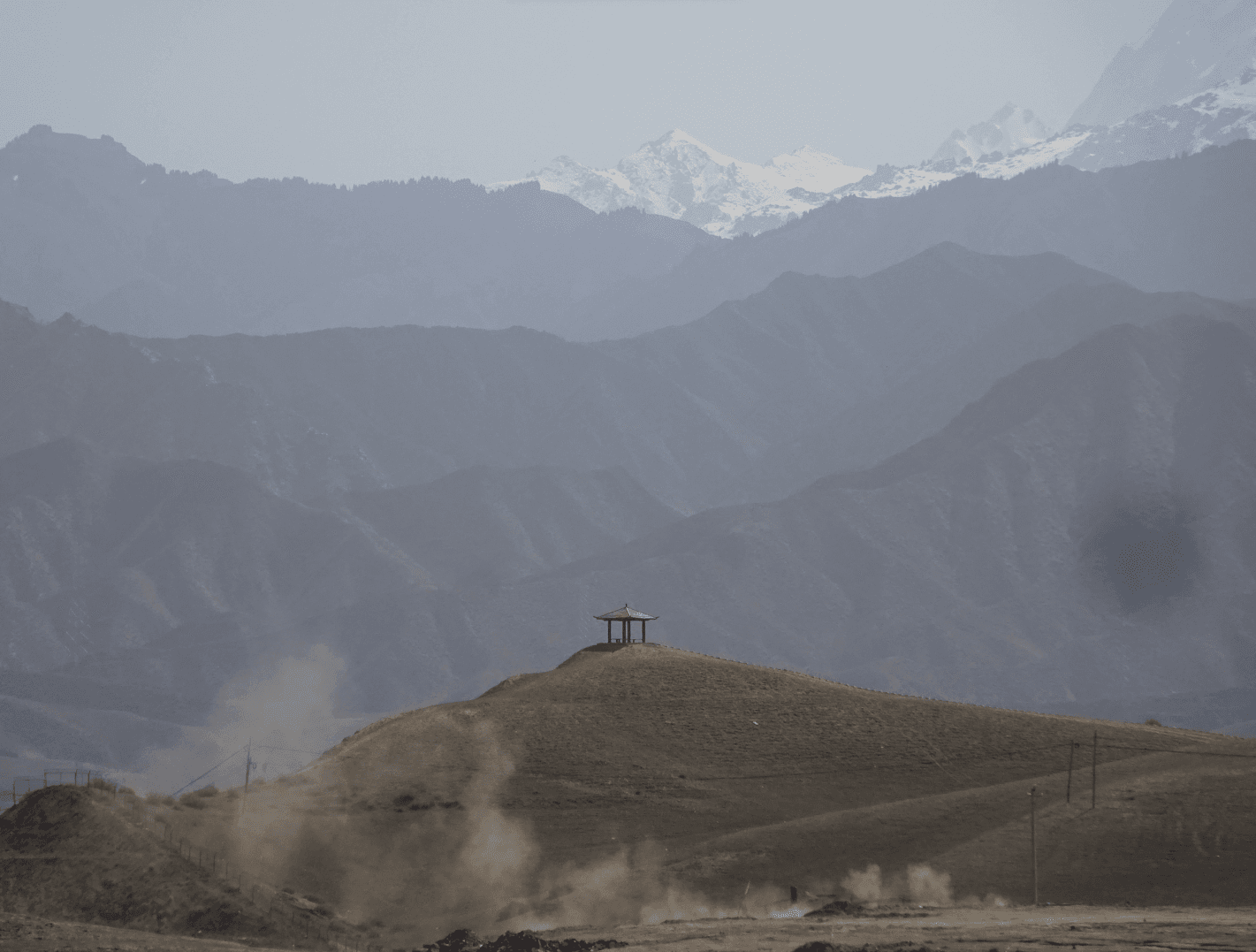
The composition was similar, but the transparency was not enough, and the mountains didn't look clear. So, I adjusted it using the "Gradient Map - Luminosity Mode" from black to white in Photoshop, and also reduced the contrast and brightness to create a low saturation, deep feeling:
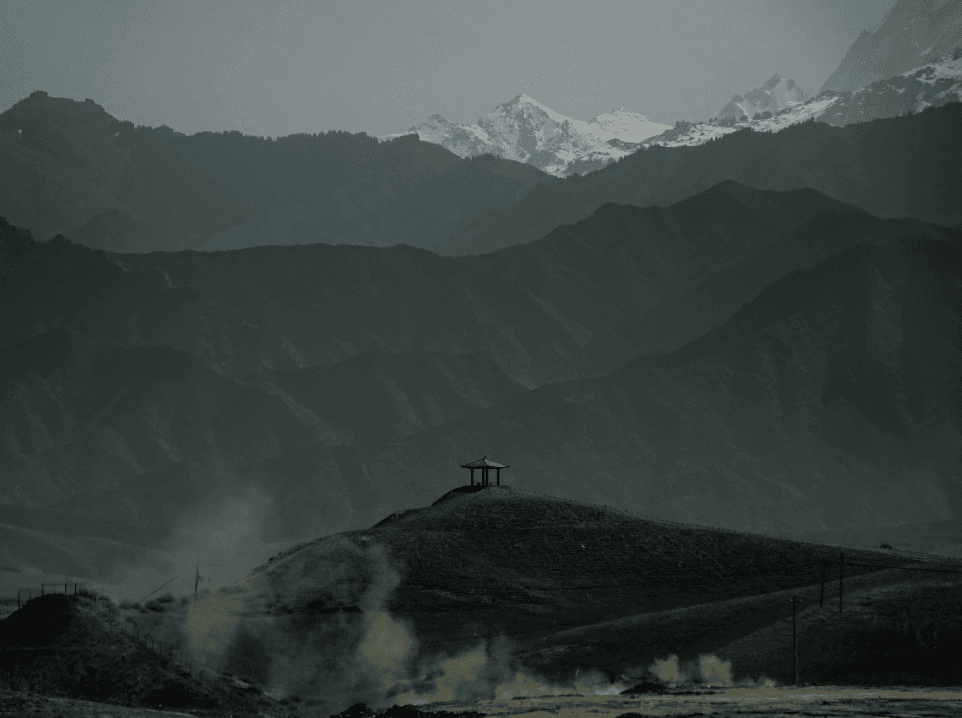
Mani Stone Piles#
Recently, while wandering around, I noticed that there were many piles of stones on the mountains around me. I didn't know what they meant and hadn't observed them up close. I always thought they were just some idle people enjoying the view from the top of the slope, but when I saw one person not moving for a long time, I realized they were not living beings.
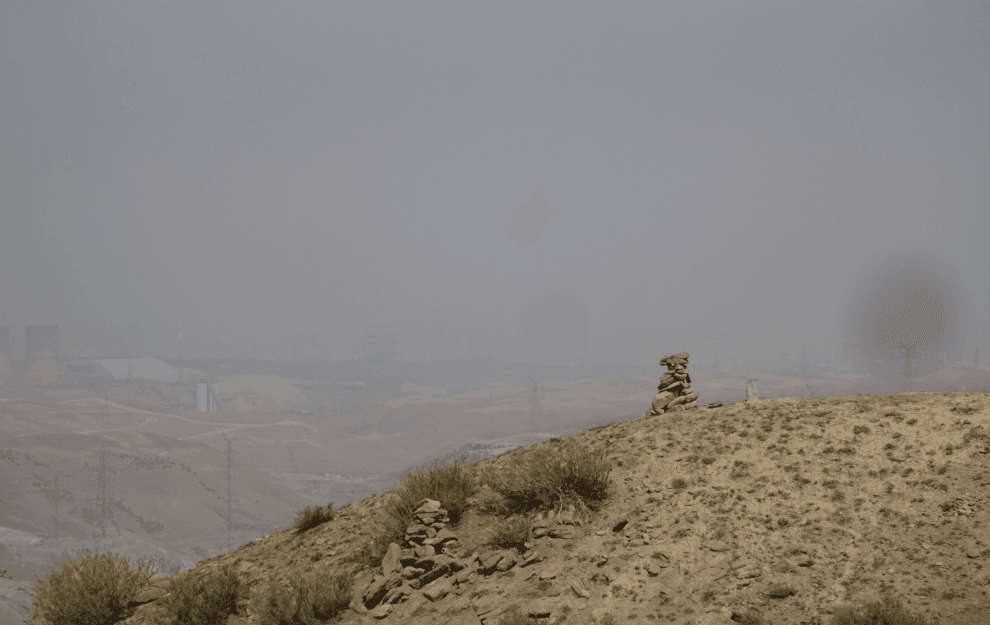
This time, while walking on the slope, I finally saw these piles of stones up close, and I was truly amazed by their number and size:
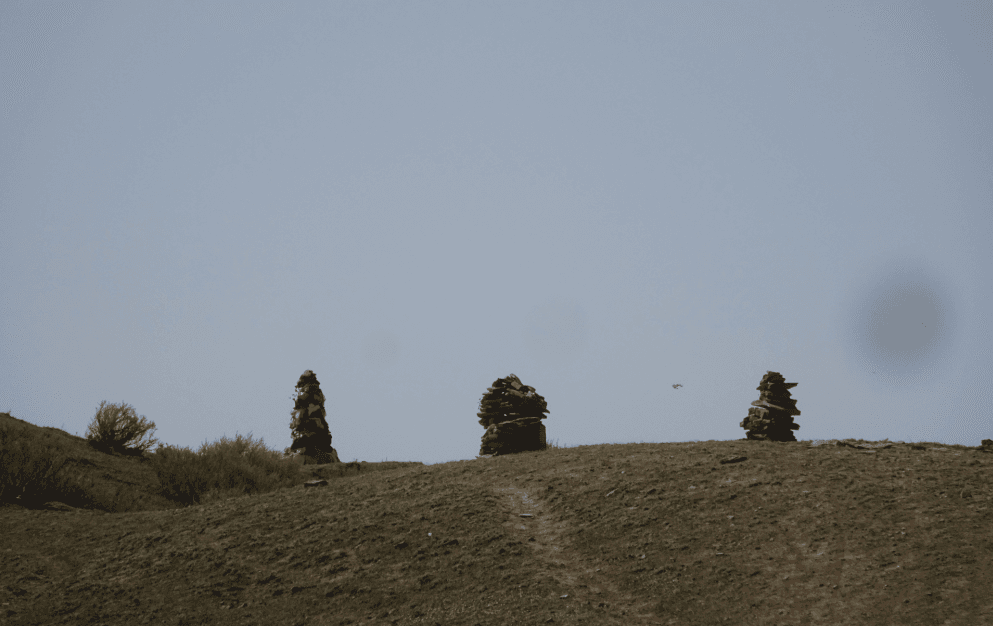
At the highest Mani stone pile nearby, many colorful cloth inscribed with scriptures in Sanskrit were hung1:
Such meaningful things, how could I miss them? So, I picked up some flat stones and made a small Mani stone pile as a memento.
Later, I saw some Mani stones with inscriptions, and I really liked them. They were quite delicate stones:
I looked it up and found that the words on the stones were "ཨོཾ་མ་ཎི་པདྨེ་ཧཱུྃ" in Tibetan. Although it is Tibetan, everyone should have seen it before. This phrase is transliterated as "Om Ma Ni Pad Me Hum" and is related to Journey to the West. It is the mantra on the Wuzhi Mountain, and its approximate meaning is "wonderful"2.
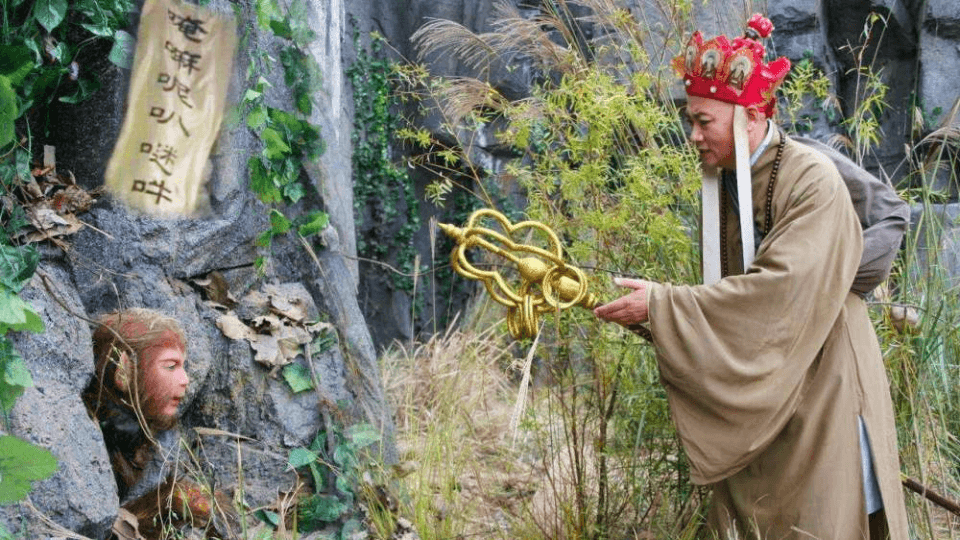
Other Photography Practices#
Lichen#
Red Flag#
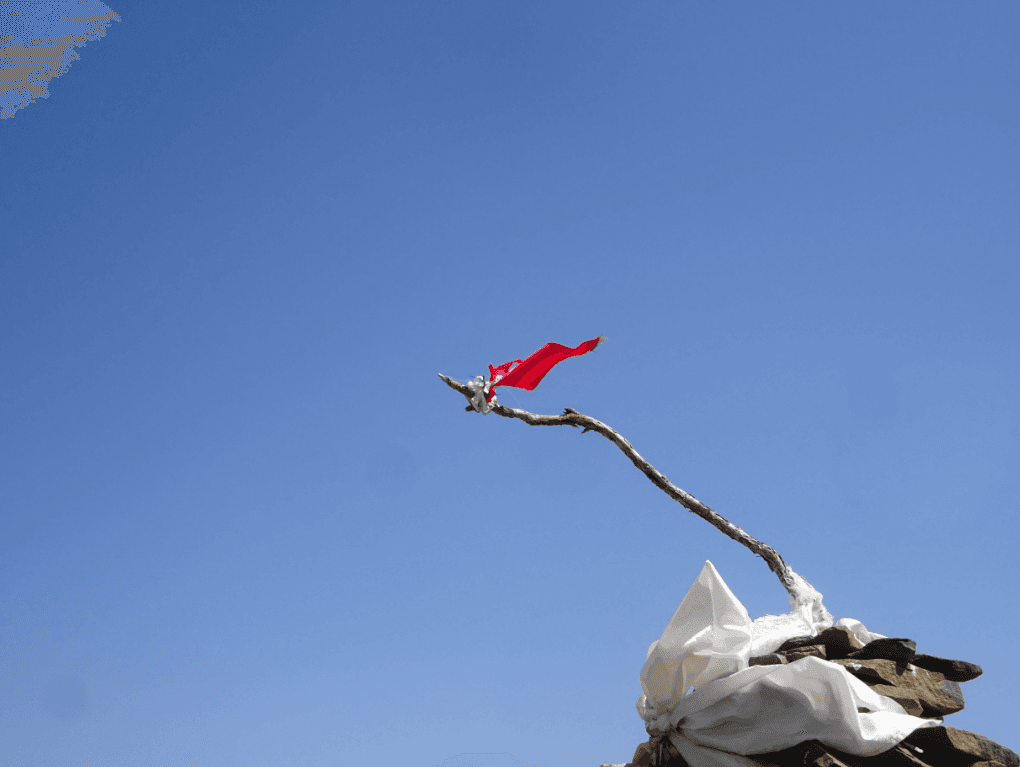
On the Slope#
Photos taken from an upward angle are often visually appealing because they usually have a pure background, making it easy to highlight the subject.
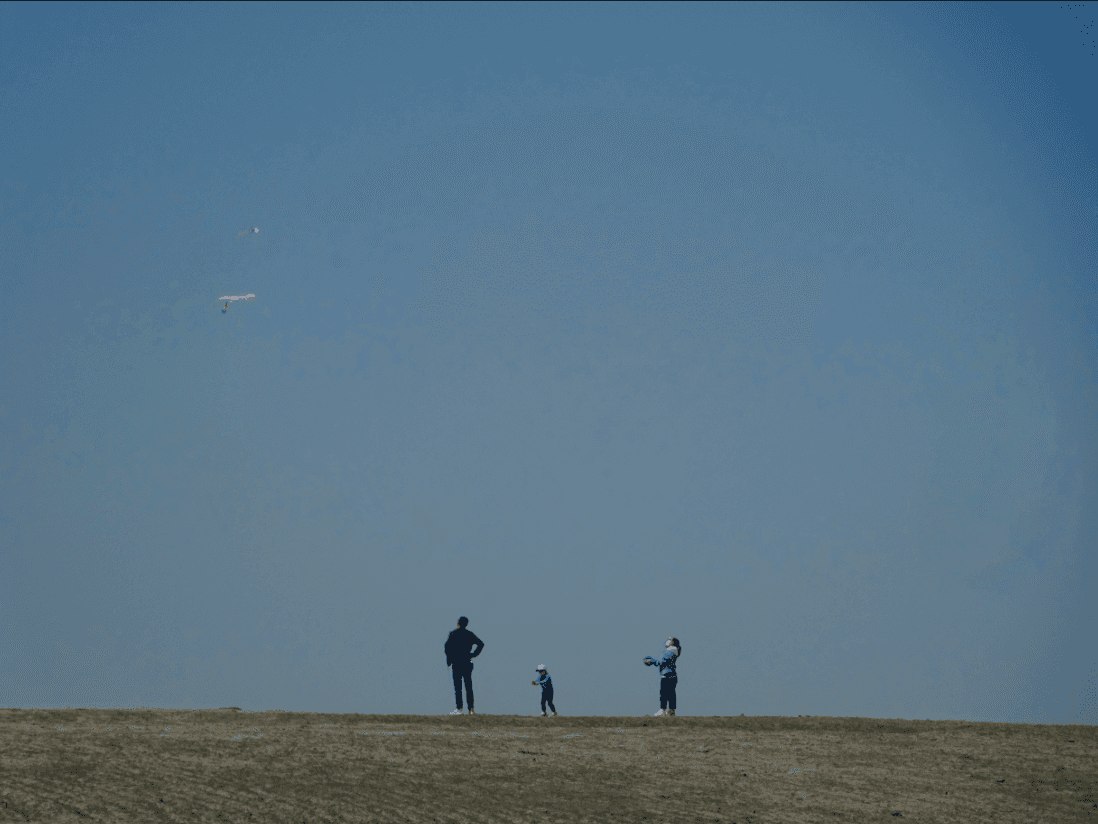
(If a few cumulus clouds ☁ float by at this time, it would be even more beautiful)
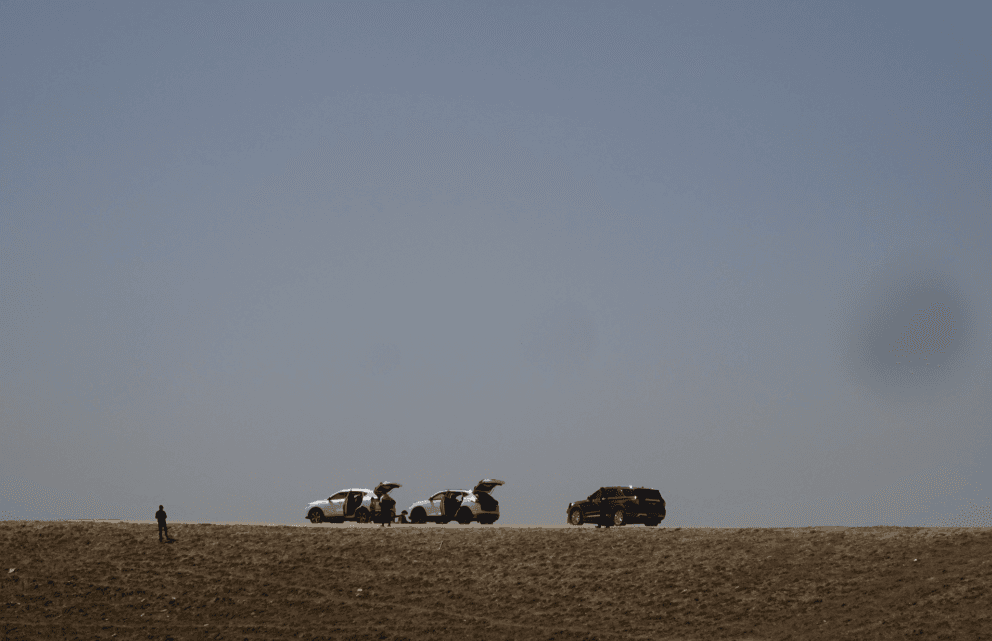
Passerby#
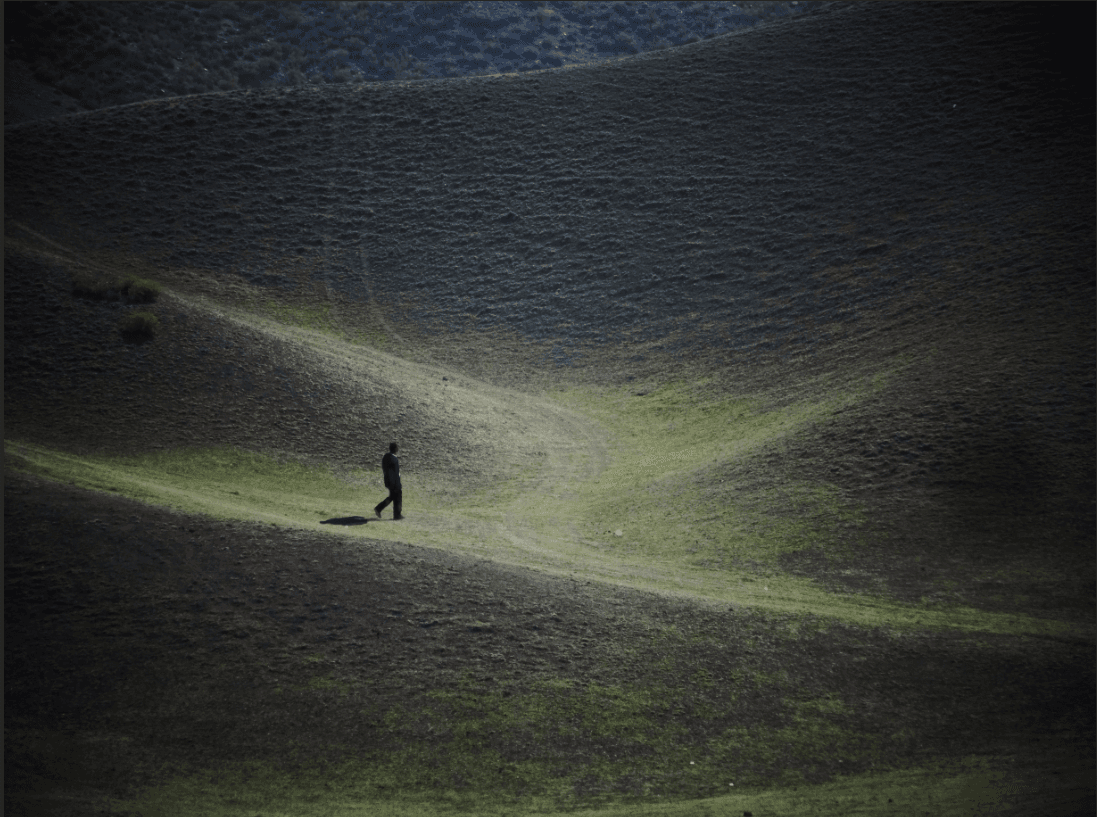
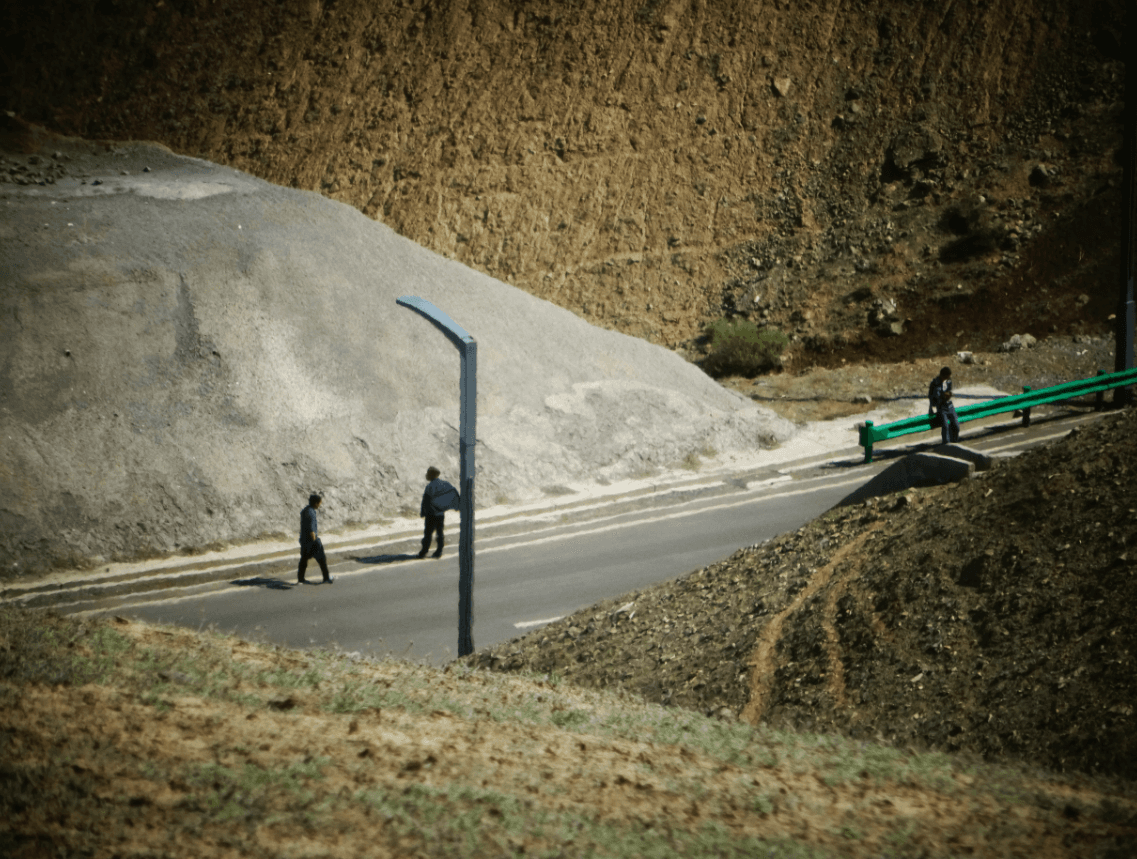
Grassland#
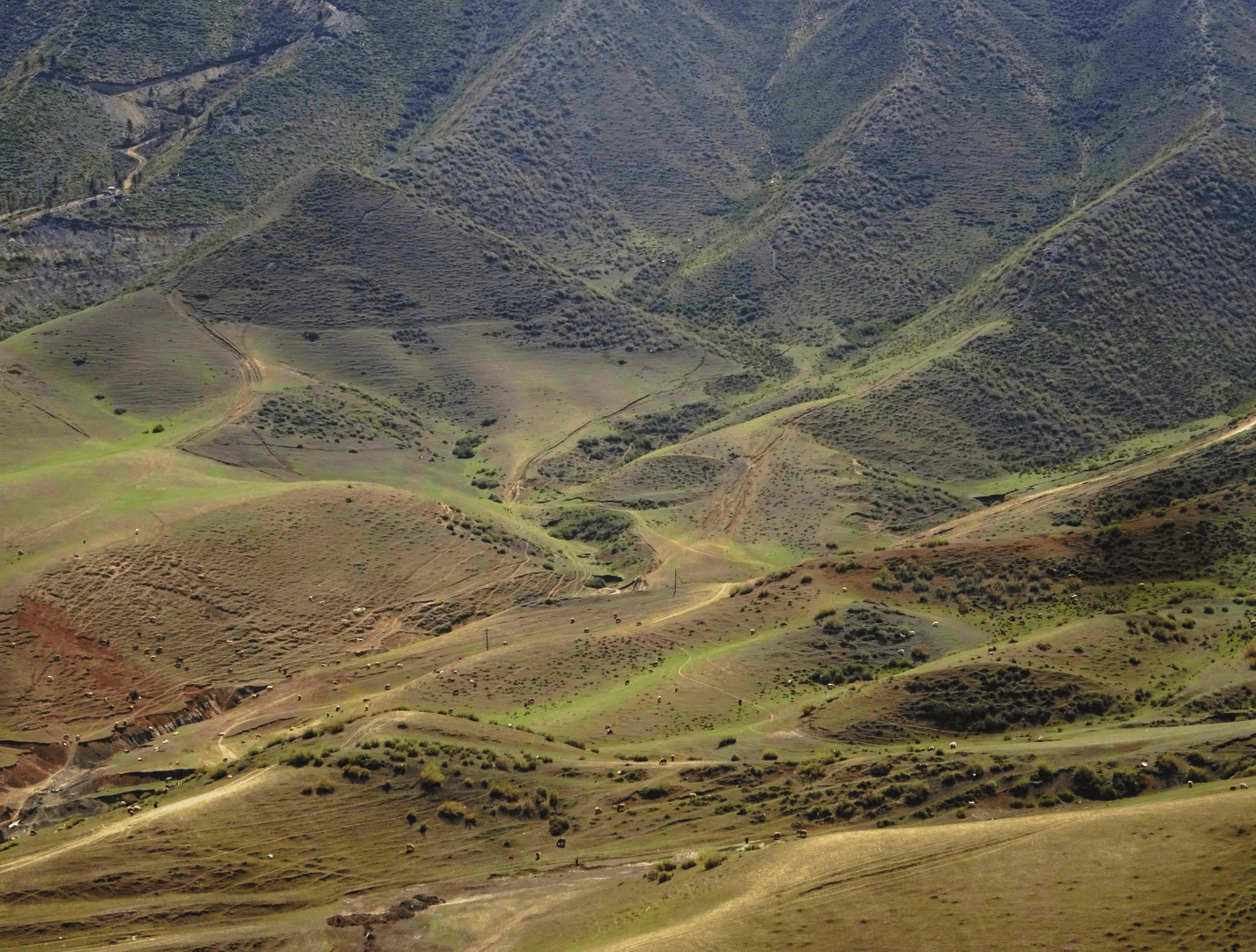
Footnotes#
-
When I used to play elsewhere, I always thought that these colorful pieces of cloth on the mountains were small flags blown by the wind from temple fairs to the wilderness 😂. ↩
-
For the specific meaning, you can refer to: 六字大明咒(观世音菩萨心咒)_百度百科 (baidu.com). The simple translation here is to avoid making the article too religious. ↩